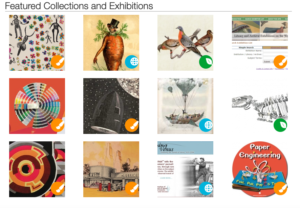Case Study 8.3: Smithsonian Libraries and Archives
Joel Richardson, Head of Web & IT at Smithsonian Libraries and Archives, offered an example illustrating the importance of having diverse perspectives in libraries. Richardson noted how a Deaf developer joined Smithsonian’s team at the beginning of a recent website redesign and how this new staff member helped draw attention to accessibility concerns as the process proceeded, including missing alt text and captions. In one instance, the developer pointed out issues with a collections map that used color alone to convey information. This concern was resolved by adding distinguishable icons as in the following set of thumbnails.

Accessibility is everybody’s job—not just the responsibility of people with disabilities. However, the Smithsonian example shows how people with varied perspectives and experiences can help bring forward different concerns and solutions.
One way that you can support accessibility work generally is by supporting efforts to diversify your staffing. Consider how you might write inclusive job postings for the positions you manage or encourage administration to follow these practices at the highest level. Here are a few resources about equity and diversity in staffing and hiring that might guide your efforts:
Examples of things to consider when writing inclusive job postings are: degree requirements, complexity of required “tech” skills, use of gendered language, valuation of “soft” vs. “tech” skills, physical requirements, availability of public transportation/building access, health insurance coverage, and compensation.
